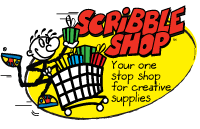Scribble Picks Pablo Picasso!

Picture of Pablo Picasso
Pablo Picasso was born on October 25, 1881 in Málaga, Spain. He was the first child of Don Jose Ruiz y Blasco and Maria Picasso y Lopez. Perhaps it was because Pablo’s father was an art teacher, but from an early age he showed an interest in drawing. He was so much into art that his mother said his first words were “piz, piz”, which is short for “lapiz”, the Spanish word for pencil.
When he was nine, Picasso finished his first painting, Le picador, which shows a man on a horse at a bullfight. At first he painted very realistically, but then he started to experiment with new ways of drawing, painting, and showing his emotions. Picasso was never that interested in regular school, but excelled in art school. When he was 13, he was admitted to the School of Fine Arts in Barcelona, Spain and at 16, Picasso’s father and uncle decided to send him to Madrid’s Royal Academy of San Fernando. Not surprisingly, this was Spain’s top art school! That came to an end because Pablo was a person that needed to be free from instruction from his professors and confines of the classroom.
In 1912, Picasso began to paste paper and pieces of oilcloth to his paintings and then paint either on them or around them. These where his first collages. This technique is called synthetic cubism, which grew out of analytical cubism. Synthetic cubism is a more decorative, colorful style of art. Picasso and his friend George Braque together created and developed this genre of cubism. Below is an example of Picasso’s work in this style. How does Picasso play with the strong shapes and colors? Where are the shadows?

Still Life with Mandolin and Guitar by Pablo Picasso, 1924 (oil on canvas)
“I paint objects as I think them, not as I see them.”
-Pablo Picasso
Picasso’s very famous work titled Three Musicians is a large painting measuring more than 2 meters wide and high. It now lives at the New York Museum of Modern Art. Three Musicians is part of series painted while he was with his family in Fontaineblueau, France in the summer of 1921.
Do you think Three Musicians is painted in the style of Synthetic Cubism?

Three Musicians by Pablo Picasso, 1921
Yes, it is! You can see that because it gives the appearance of cut paper. What are some other reasons that makes it cubist?
“In Cubism, the subject of the artwork is transformed into a sequence of planes, lines, and arcs. Cubism has been described as an intellectual style because the artists analyzed the shapes of their subjects and reinvented them on the canvas. The viewer must reconstruct the subject and space of the work by comparing the different shapes and forms to determine what each one represents. Through this process, the viewer participates with the artist in making the artwork make sense.
Picasso paints three musicians made of flat, brightly colored, abstract shapes in a shallow, boxlike room. On the left is a clarinet player, in the middle a guitar player, and on the right a singer holding sheets of music. They are dressed as familiar figures: Pierrot, wearing a blue and white suit; Harlequinn, in an orange and yellow diamond-pattered costume; and, at right, a friar in a black robe.” For more information, please have a look at http://www.pablopicasso.org/three-musicians.jsp
Now you try! Go ahead and download the coloring sheet below and Scribble your own Three Musicians. Go wild with color!
“All children are artists. The problem is how to remain an artist once he grows up.”
-Pablo Picasso

Three Musicians by Pablo Picasso























 Image via
Image via 



 Image via
Image via  Image
Image  Image via
Image via 






 Image via
Image via 






